See, Think, Wonder: Have you used this as a strategy in your classroom? If you haven’t, it’s AMAZING and so SIMPLE! It’s officially considered a visual inquiry strategy. It’s very similar and basically the same strategy as using phenomena as inquiry before instruction promoted in the Next Generation Science Standards. I love the Wonder of Science NGSS bank for phenomenon. It’s totally a great resource, and it can be used with See, Think, Wonder.
See, Think, Wonder Strategy
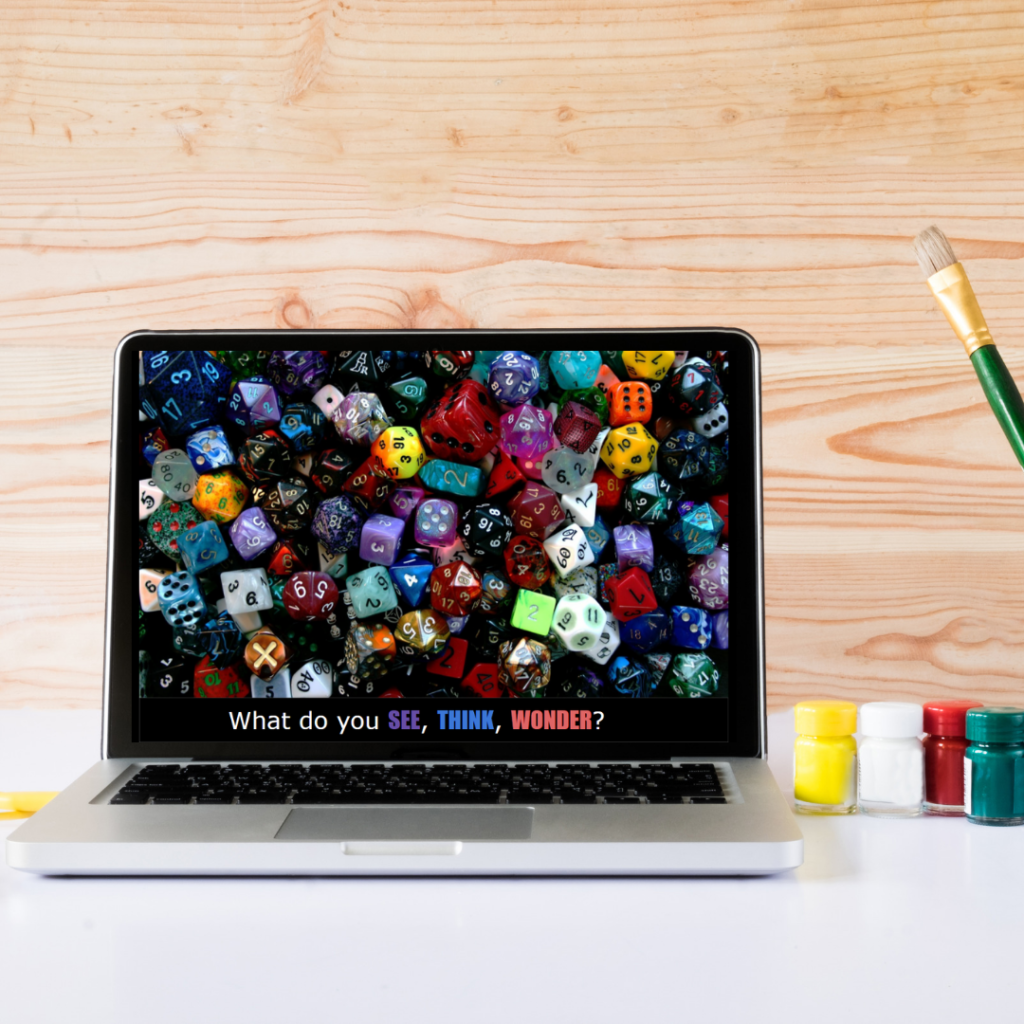
So what is the See, Think, Wonder strategy? All you have to do as a teacher is utilize a picture, a work of art, a scientific phenomenon, artifact, object…. just something to look at. Next, you simply ask 3 questions: What do you see? What do you think? What do you wonder? Allow time for students to make careful observations and let the discussions begin! This is a perfect activity for a daily or weekly discussion or to create interest at the beginning of a new unit of study.
I highly recommend that you ask students to back up their thoughts with explanations to avoid random and silly thoughts, but those random and silly thoughts do sometimes lead to something. Students just need to explain their thinking. What made them think of that? Why do they feel that way? I also love creating a section of the classroom for See, Think, Wonder where students can write thoughts out and post them throughout the week. Many of us need time to digest how we think and feel about something.
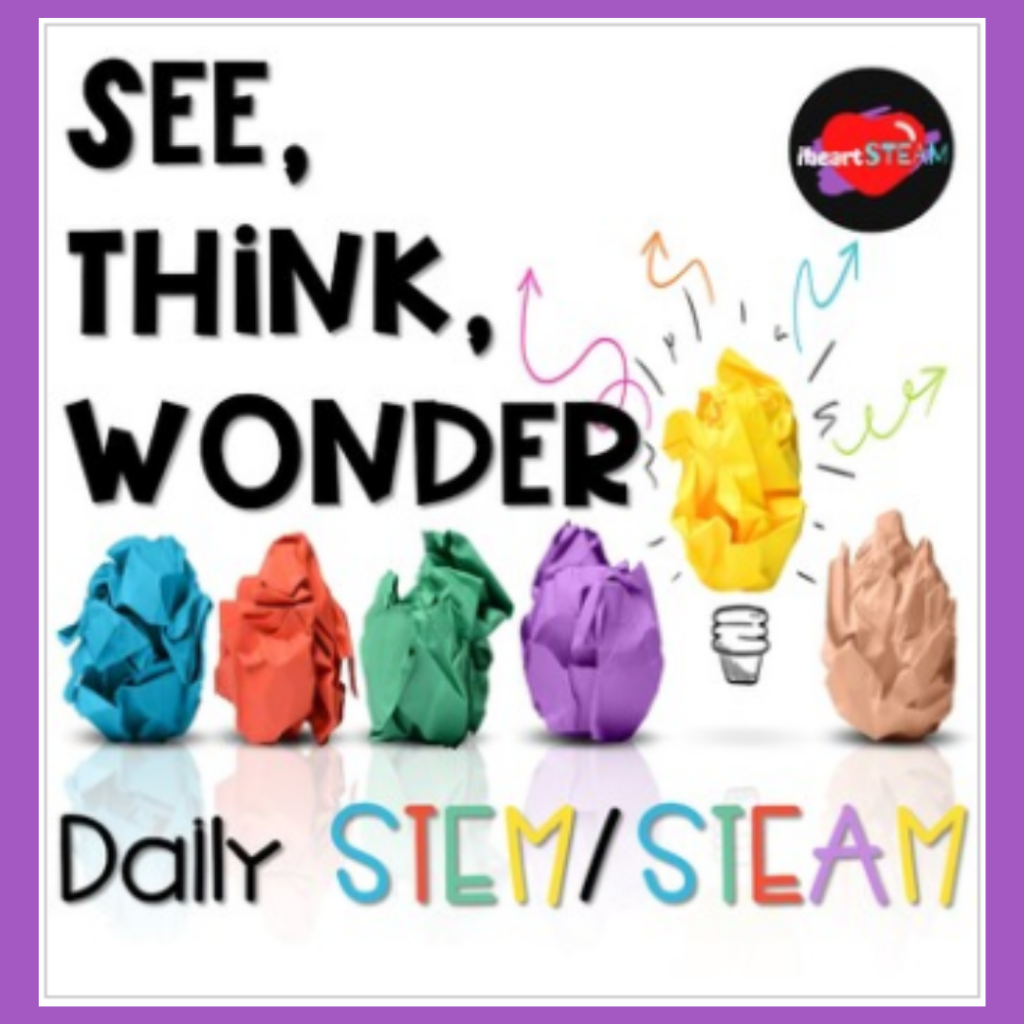
See, Think, Wonder with a Twist
As this new world of distance learning has grown and evolved, I decided it was necessary to create a digital platform for my daily See, Think, Wonder routine. Then it occurred to me…. I wanted to integrate it into STEM/STEAM. What I created is a collection of photos that students will be looking at for See, Think, Wonder. One of the best places for FREE images is Pixaby. I then decided to group them into Science, Technology, Engineering, Art, and Mathematics related photos. My plan is to rotate the area we focus on each week.
I also plan to really dig in to how experts in each of these career field areas might have different perspectives when they See, Think, Wonder. I want students to become familiar with this.
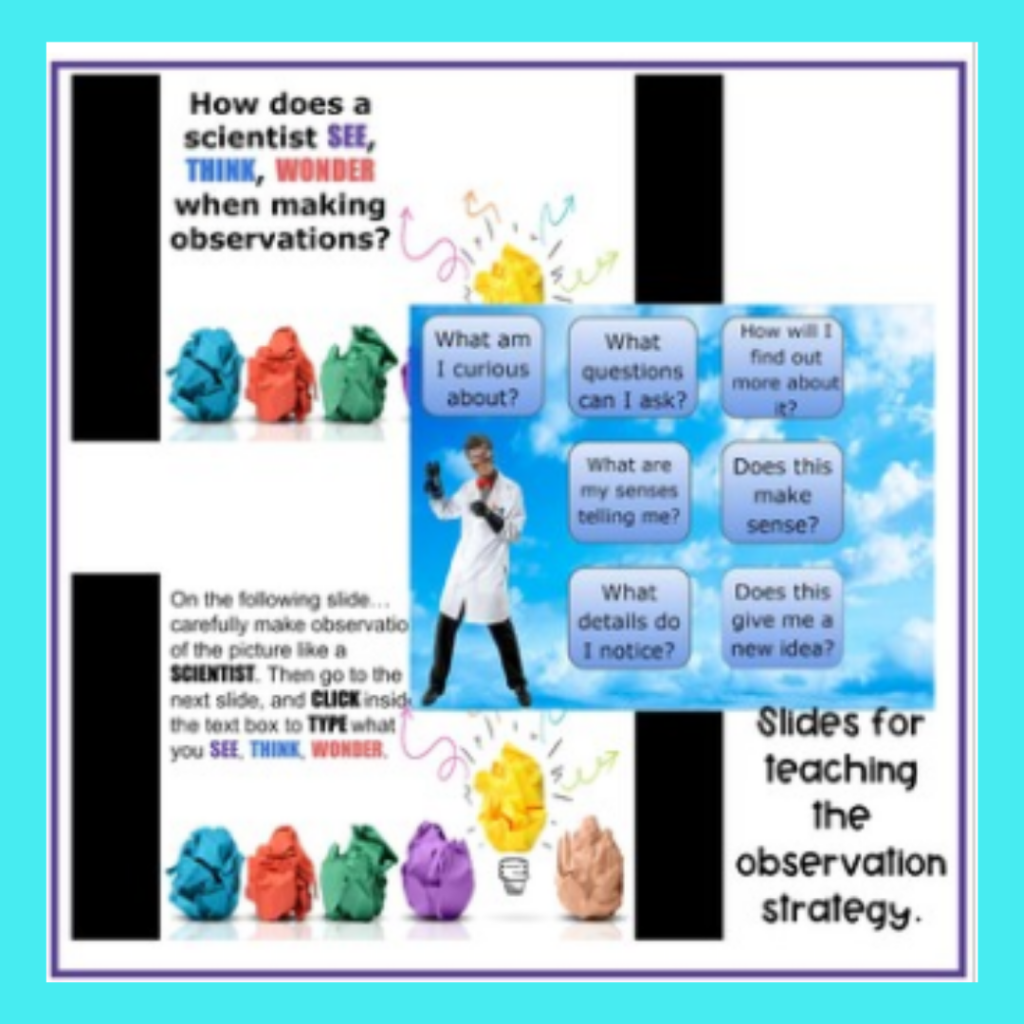
Science Integration
I created a Google Slides lesson that will teach students how scientists may think, as well as all the other career fields in STEAM. Every picture I chose for See, Think, Wonder science has some relation to the field of science. For instance, there are many pictures of nature. The same pattern follows for engineering, technology, art, and mathematics.
See, Think, Wonder Writing
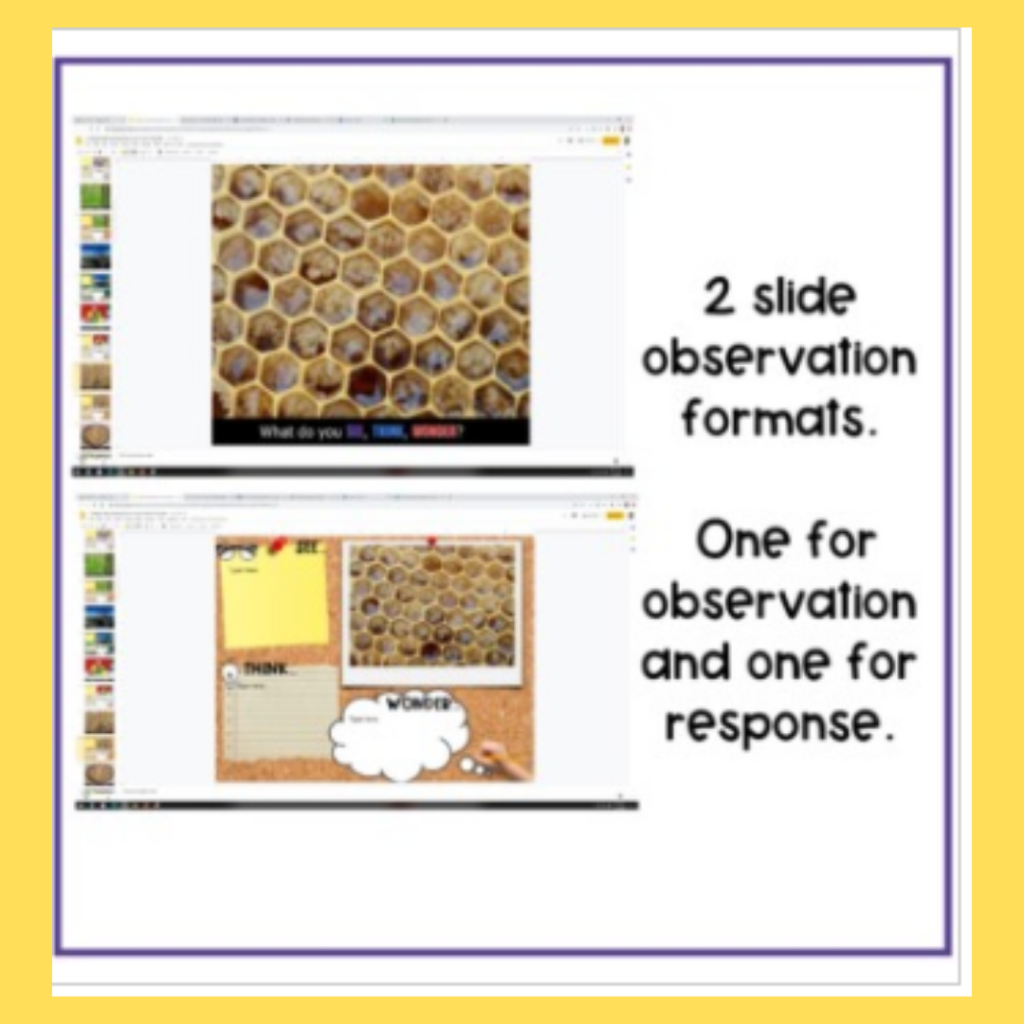
Students will open Google Slides and find a large single image to observe. That image is then followed by an interactive slide that includes the image again with a response section for See, Think, and Wonder. I really don’t want students to answer all the questions in one sitting so I will be giving one new picture for each week only. In the slide above students will be taking a close up look at a honey comb.
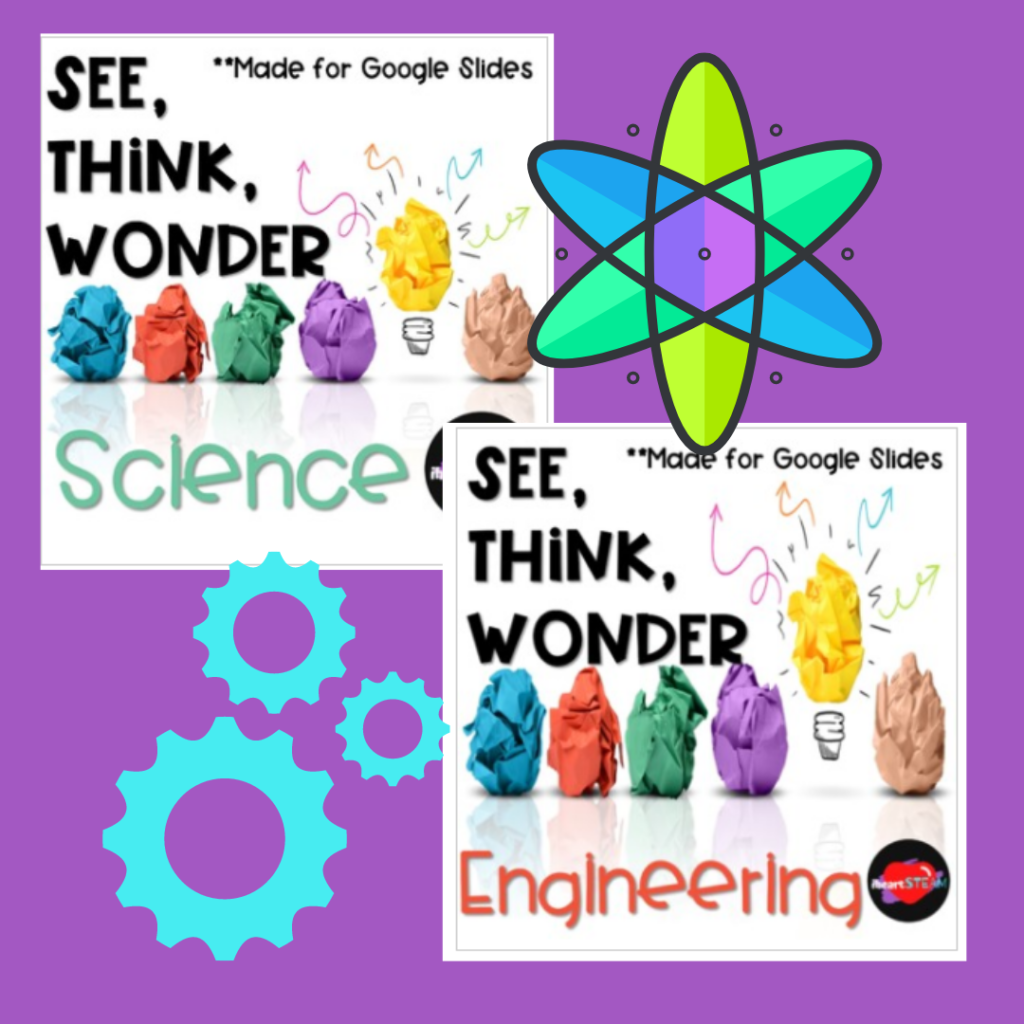
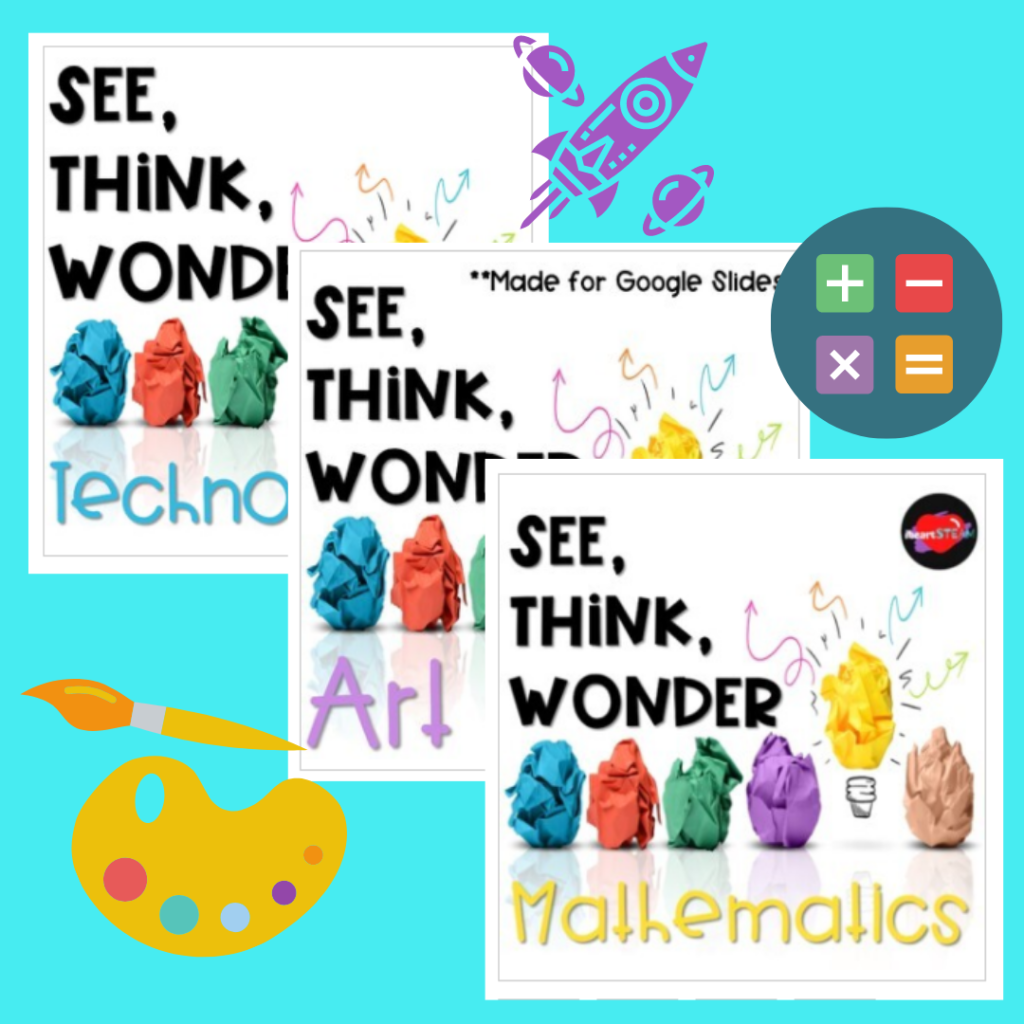
See, Think, Wonder Activity
While this is a super simple strategy that anyone can create to promote inquiry, who wants to create all these digital lessons? I know I don’t! They really take time! I was passionate about this one! You don’t have to go to the trouble of creating this activity to use in your classroom immediately through a virtual format! Just grab it in my store! Every single topic is sold separately or in a bundle: See, Think, Wonder from iheartSTEAM. Let me tell you, I am buying digital creations to make my life easier right now left and right!!!
I can totally not take credit for See, Think, Wonder. Actually, I don’t know the original creator, but I do know where you can find even more CRAZY good resources from Project Zero’s Thinking Resource Toolbox at Harvard University! Yep, that’s right! Harvard! This is such a needed skill that students should practice. Inquiry is hard to develop naturally. We question so much at young ages, but get made to feel uncomfortable with too many questions. Questioning abilities then slowly start to fade for many students.
STEAM Inquiry
A few years ago I realized this loss of inquiry ability and started something called the STEAM Corner in my classroom. Read about here! I will never go back! Inquiry starters will always be a part of my classroom! I love hearing what other teachers are doing in the classroom, and I love sharing! I have actually designed a HUGE STEM/STEAM classroom resource that is FREE to any teacher willing to download it! Grab my STEM/STEAM Guide here!
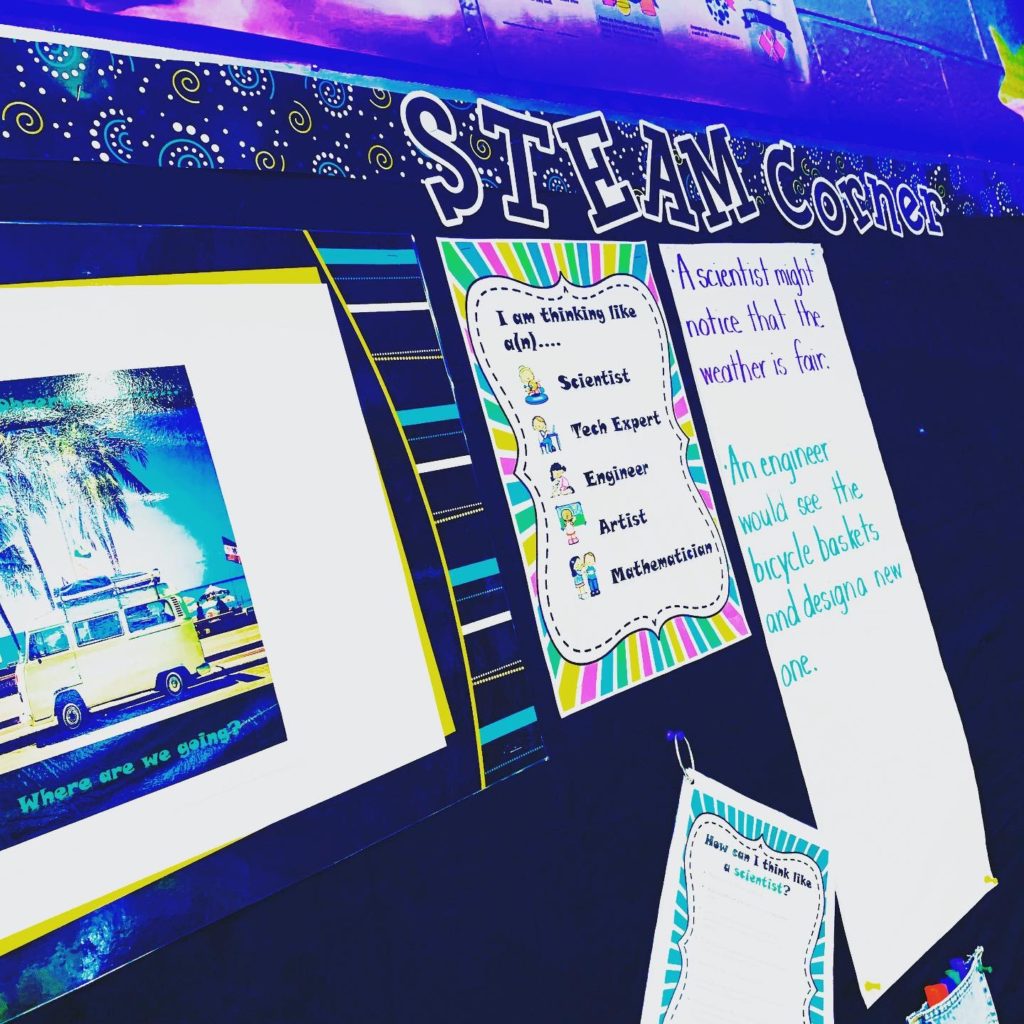
Let’s stay in touch! Email me anytime bonnie@iheartsteam.com ! Cheers!








